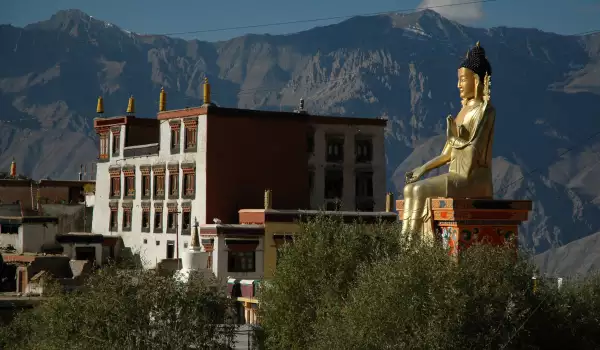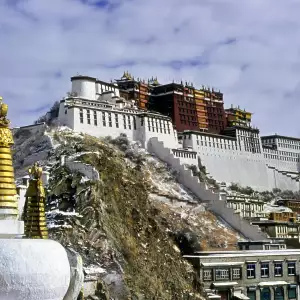Lhasa

Lhasa is the capital of the autonomous region of Tibet in the People’s Republic. It is situated at 3650 m altitude on the northern slopes of the Himalayas, in the Autonomous southern Tibet Region. With its location Lhasa is the highest located city in the world. 50 km from it is an airport, a spiritual path to the center takes about an hour.
This is the main place for the Tibet Autonomous Region and the traditional residence of the Dalai Lama.
Lhasa is also called "land of the gods". The settlement dates from 1300 and is built in a valley, located near the eponymous river. In the 7th century there was built the first temple and palace Dzhohang Potala. Eight centuries later were built Buddhist monasteries Sera, Drepung and Gandin.

The historical and spiritual heritage of Lhasa is huge, with regard to fighting and protection of Tibetan culture. Here lies the most unique and revered by Tibetan culture Jovi Shakyamuni statue, situated in the large Dzhohang temple. It consists of three floors, which house prayer rooms. Here pilgrims pass through three concentric paths - two around the temple and one inside it.
About 3 km away is the Summer Palace and the Potala Palace. Once this has been the spiritual and political center of Tibet, but is now converted into museums. Built in the 17th century during the reign of the fifth Dalai Lama, this sacred building has 1, 000 rooms. The inner part consists of the so-called Red Palace, which serves as a tomb and holds the relics of previous Dalai Lamas. The White Palace even served as winter residence of the leader and the seat of government.
The area is a developed tourist destination in Asia, offering very good hotels, tasty restaurants, travel agencies, Chinese department stores and supermarkets. Some areas of the city are difficult to distinguish from major Chinese cities, but the Tibetan spirit is very noticeable, especially in older parts near Barkhor.








